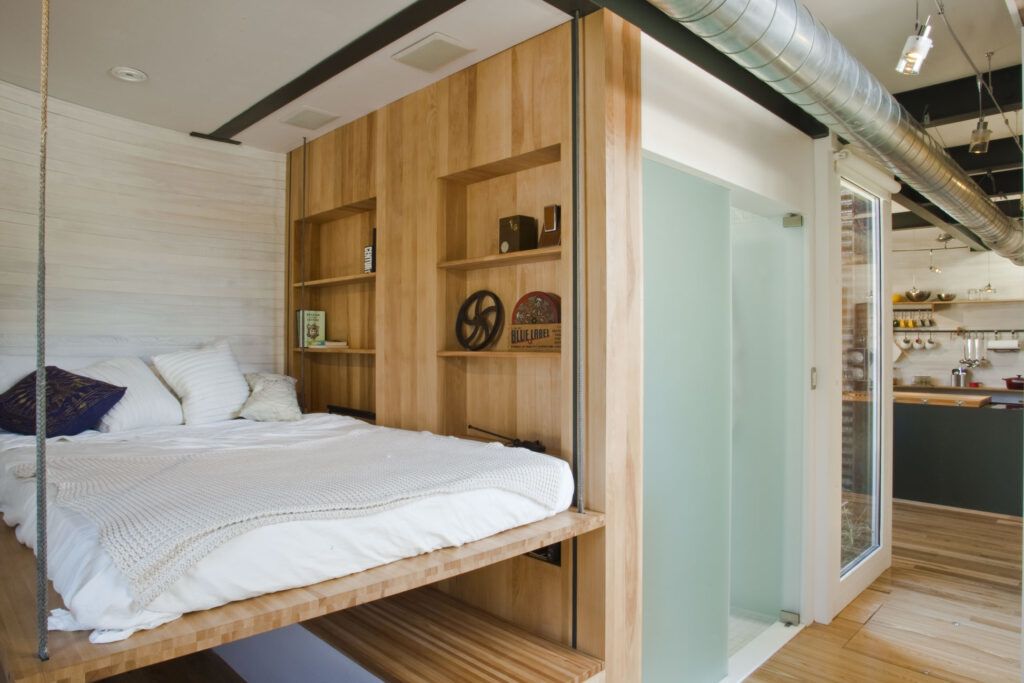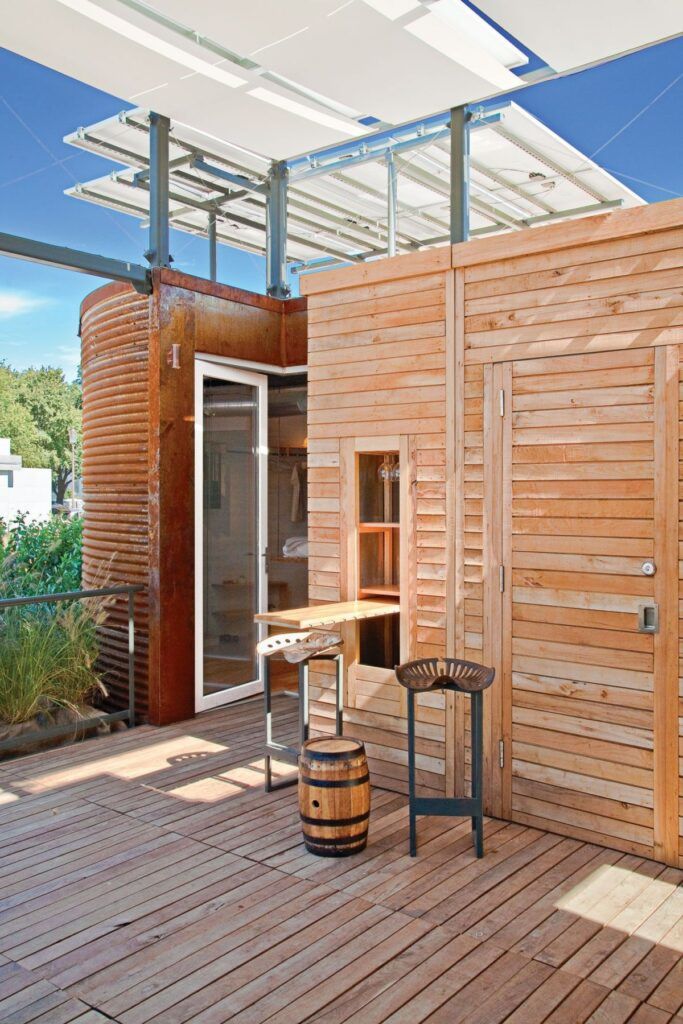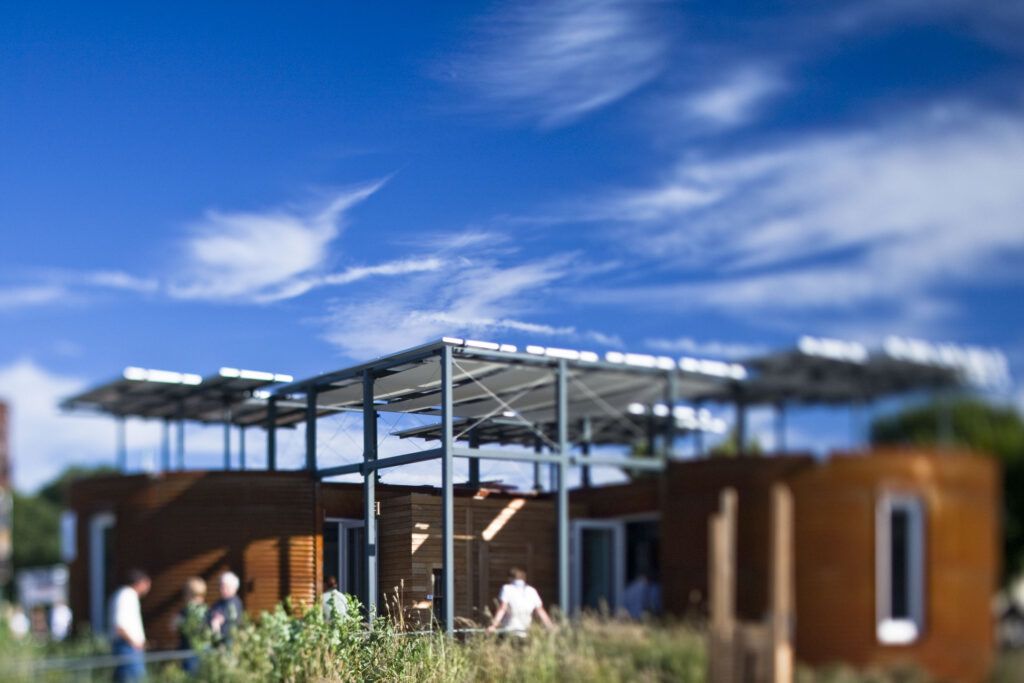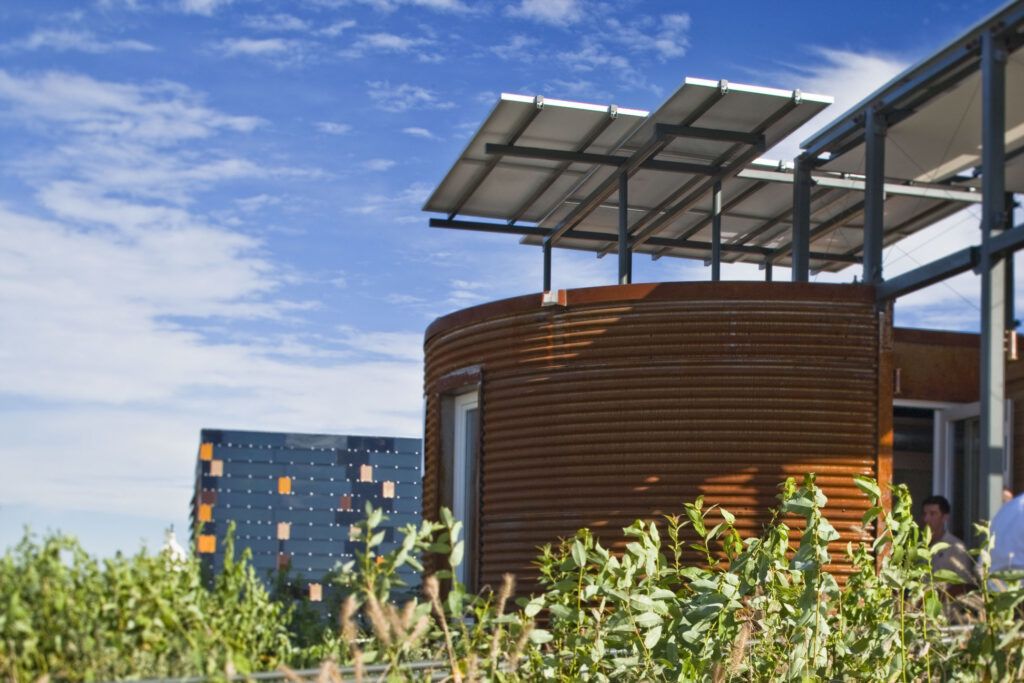Steel Silo Turned Into a Solar Home

One key to sustainable design is going local, so with many old rural grain silos having already gone vacant they make for prime prefabricated old parts for potential new homes. This student project shows one way in which one could cut apart an existing storage silo and use each slide as part of a novel residential structure.


Lofted solar panels provide shade and solar energy as well as square shapes that visually offset the otherwise-round silos. In contrast to the circular cores, these are thin and rust-free, creating a cool balance between familiar rustic and rural farm materials and newer, lighter elements.


Each cylinder is dedicated to one type of primary living space: kitchen, bedroom and living room. A central courtyard connects these various volumes while the solar panel system shades and protects them from rain.

The Cornell students working on this project for the Solar Decathlon split up into architectural and interior design teams to tackle each section.

While it is a great project and certainly an inspiration to green-minded designers, it has a few (hopefully non-fatal) flaws.

First, the actual construction was done using custom-made cylinders instead of actually cutting apart a real silo. One could argue, though, that this is simply intended to be a prefab prototype – something that illustrates the possibilities of creating new houses out of old and readily-available salvage materials (recycled silos being just the start).

Second, though, if the focus is on enabling small-scale, do-it-yourself renovations, then the question of semi-circular surfaces becomes a big one. Sure, you can create custom curved siding, built-ins and so forth for one-off projects or mass-produce them if the curvature remains the same, but if one silo varies from the next it could be painful to try and replicate these parts each time.
More news, from Cornell:
“Cornell’s 2009 Solar Decathlon Team completed two years of effort on its innovative Silo House with a seventh-place finish out of 20 international entries on the National Mall in Washington, D.C.”
“The 2009 team’s strategy included a monthlong test run in August and September at the State Fairgrounds in Syracuse, including two weeks of public tours during the fair. The team tested systems, worked out transportation and other details, and honed ways to explain the house and its features to visitors.”




